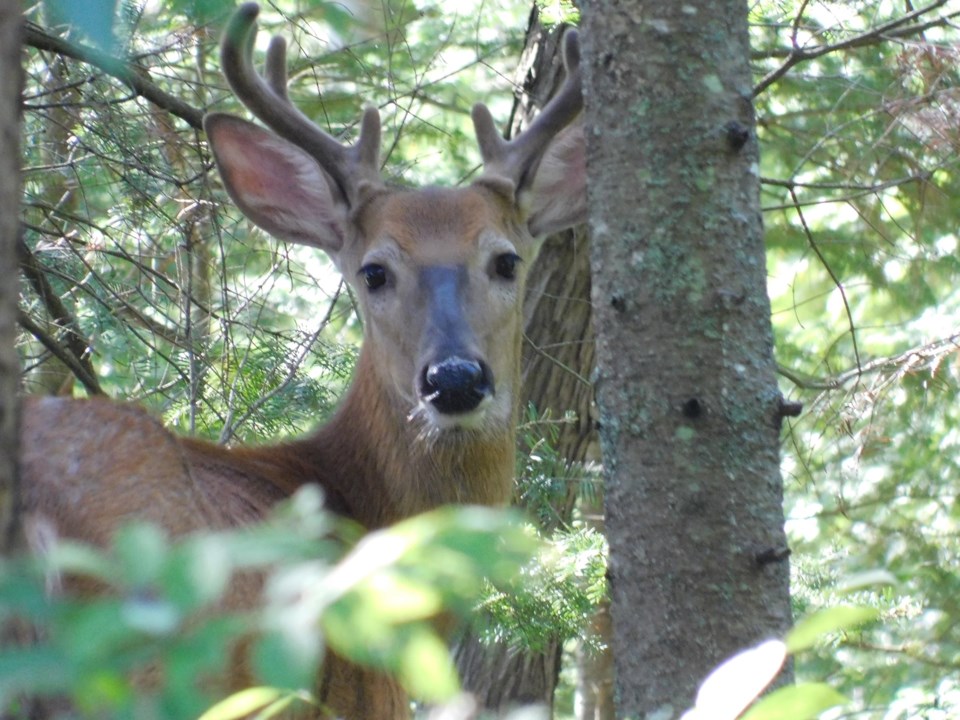It’s become obvious that climate change is presenting ever greater challenges to the way we live but the stories we hear – floods, fires, heat domes, atmospheric rivers – all concentrate on the effects on people. Wildlife is facing the same crises and needs help too.
Land Trusts and Conservancies – both regional and national – are one way we can help. By acquiring and holding in perpetuity individual properties we can create places of respite for many species.
Huronia Land Conservancy, with the mission of protecting spaces in our area, currently maintains and protects three properties.
But wildlife doesn’t recognize our boundaries and once something crosses an imaginary line it becomes at risk again.
Parks Canada has recognized this as a problem and has developed National Priority Areas for Ecological Corridors. These corridors try to link protected natural habitats so as to support biodiversity and help species adapt to climate change.
Corridor number 16 goes right through Huronia.
As the planet warms, the range of all types of wildlife will change and many species will be moving north to cooler climates. We in North Simcoe inhabit a choke-point between Georgian Bay and Lake Simcoe and wildlife from southern Ontario and northern US states will be trying to travel through a well-populated, heavily-trafficked and fractured geography.
The Huronia Land Conservancy was founded with the mission to assess the condition and value of the lands in its area of concern, to inform and educate landowners on sound land management practices and to acquire and protect, in perpetuity, properties that would give shelter to wildlife of all types.
Funded by a Trillium grant, 208 properties were surveyed, species’ counts were conducted and a wide variety of wildlife was identified, including 11 bird species that are identified as ‘At Risk’.
Three properties have been acquired and others are in stages of negotiation, but it is a long and expensive process.
Properties can be donated and landowners can benefit from tax breaks but survey, legal and stewardship costs are borne by donations to the Conservancy. The three are located at some distance from each other and from other protected areas such as Awenda Park or Conservation areas. To develop an effective Corridor much more needs to be done.
The Huronia Region has several rare natural attributes.
What we call Georgian Bay was once much larger and the Nipissing Coastline still exists – a ridge set back from the current shore that is home to a variety of life and, in some places, micro climates. The Cedar Ridge property, which is on this ridge, is home to hardwoods and spring ephemerals. In contrast the long stretch down along the cottage country to Wasaga Beach is home to some of the longest sand beaches in the world with dunes stepping back and up to the old shoreline. The Hogg Creek property contains a Provincially significant wetland.
The Marshall Preserve contains white cedar and sugar maple forest and some white pine plantations and forms part of a Corridor by linking the Wye Rver watershed with the Midland Little Lake wetland and Lalligan Lake.
HLC is governed by a dedicated Board and funded by donations. Help is needed on both fronts so please consider how the natural attributes of Huronia make it such an attractive place to live and help in whatever way you can.
Check out the Huronia Land Conservancy’s website and Facebook page, make a donation, offer some time and maybe another piece of property can be saved for future generations.
Bill Molesworth is a retired CEO and chief librarian of both the Midland and Fredericton public libraries.He also sits on the Huronia Land Conservancy's board of directors.



